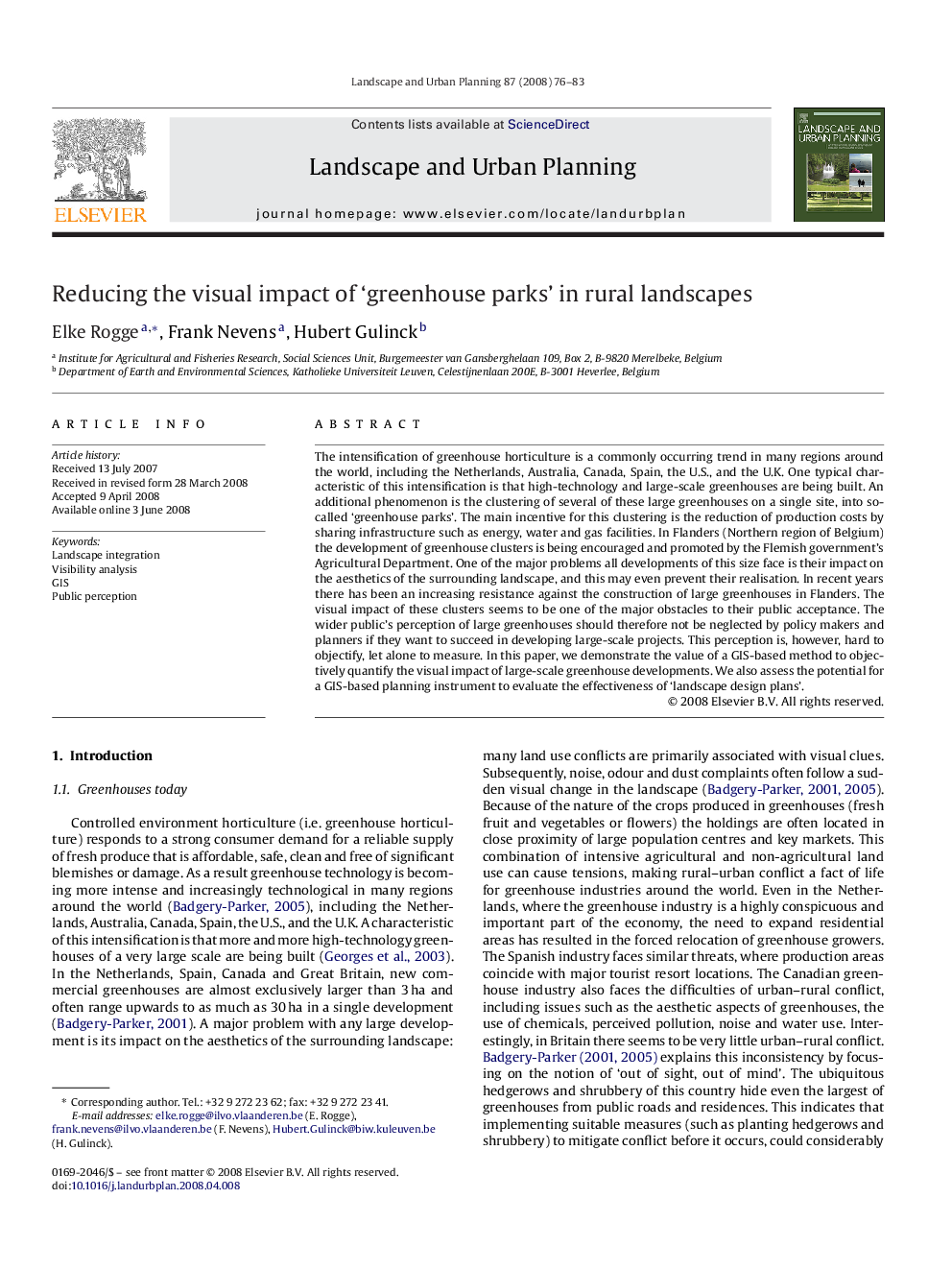| Article ID | Journal | Published Year | Pages | File Type |
|---|---|---|---|---|
| 1050071 | Landscape and Urban Planning | 2008 | 8 Pages |
The intensification of greenhouse horticulture is a commonly occurring trend in many regions around the world, including the Netherlands, Australia, Canada, Spain, the U.S., and the U.K. One typical characteristic of this intensification is that high-technology and large-scale greenhouses are being built. An additional phenomenon is the clustering of several of these large greenhouses on a single site, into so-called ‘greenhouse parks’. The main incentive for this clustering is the reduction of production costs by sharing infrastructure such as energy, water and gas facilities. In Flanders (Northern region of Belgium) the development of greenhouse clusters is being encouraged and promoted by the Flemish government's Agricultural Department. One of the major problems all developments of this size face is their impact on the aesthetics of the surrounding landscape, and this may even prevent their realisation. In recent years there has been an increasing resistance against the construction of large greenhouses in Flanders. The visual impact of these clusters seems to be one of the major obstacles to their public acceptance. The wider public's perception of large greenhouses should therefore not be neglected by policy makers and planners if they want to succeed in developing large-scale projects. This perception is, however, hard to objectify, let alone to measure. In this paper, we demonstrate the value of a GIS-based method to objectively quantify the visual impact of large-scale greenhouse developments. We also assess the potential for a GIS-based planning instrument to evaluate the effectiveness of ‘landscape design plans’.
